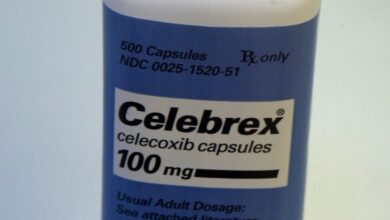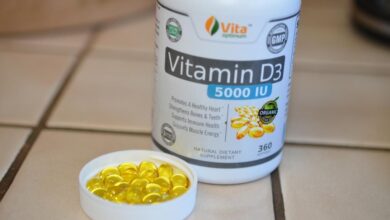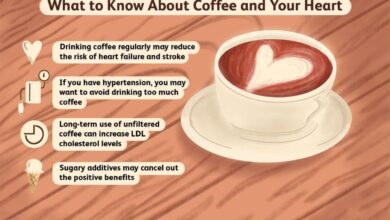
10 year cholesterol risk is a critical assessment for understanding your cardiovascular health. This comprehensive guide dives into the factors considered, how results are interpreted, and practical steps to lower your risk. We’ll explore the science behind the assessment, discuss the role of lifestyle choices, and provide actionable recommendations to empower you to take control of your health.
Understanding your 10-year cholesterol risk empowers you to make proactive choices about your health. This assessment isn’t just about numbers; it’s about understanding your individual risk profile and taking steps to mitigate potential heart health issues.
Understanding 10-Year Cholesterol Risk Assessment
The 10-year cholesterol risk assessment is a crucial tool for predicting the likelihood of a cardiovascular event, such as a heart attack or stroke, within the next decade. This assessment helps healthcare providers and individuals understand their personal risk and make informed decisions about preventive measures. By identifying individuals at high risk, interventions can be implemented to reduce the chance of adverse outcomes.The assessment considers various factors to estimate the risk, and the results provide a valuable guide for lifestyle modifications, medication, or other preventive strategies.
Different methods exist for calculating this risk, and understanding these methods allows for a more nuanced understanding of individual circumstances. The significance of the 10-year timeframe is that it allows for a focused, actionable plan for preventative care. This is particularly helpful in assessing and addressing potential heart disease issues early on.
Factors Considered in Calculation
Several key factors influence the 10-year cholesterol risk assessment. These factors provide a comprehensive picture of an individual’s risk profile. Understanding these factors is vital for comprehending the assessment’s implications.
- Age: Age is a significant factor as the risk of cardiovascular disease increases with age. Older individuals generally have a higher risk compared to younger individuals.
- Sex: Men and women have different risk profiles, and the assessment accounts for these differences.
- Cholesterol Levels: Total cholesterol, LDL (“bad”) cholesterol, HDL (“good”) cholesterol, and triglycerides are key indicators of cardiovascular health and are incorporated into the assessment.
- Blood Pressure: High blood pressure is a significant risk factor for heart disease, and the assessment takes blood pressure readings into account.
- Smoking Status: Smoking is a major risk factor, and the assessment considers whether the individual is a current smoker, former smoker, or nonsmoker.
- Diabetes Status: Diabetes significantly increases the risk of cardiovascular disease, and the assessment considers whether the individual has diabetes.
- Family History: A family history of heart disease increases an individual’s risk, and this is factored into the assessment.
Methods for Calculating Risk
Various methods are used to calculate the 10-year risk of cardiovascular disease. Each method has its own strengths and limitations.
- Framingham Risk Score: This is a widely used method that considers several factors, including age, sex, cholesterol levels, blood pressure, smoking status, and diabetes. The score is used to estimate the risk of a cardiovascular event over a 10-year period. For example, a person with a high Framingham score might be more likely to experience a heart attack or stroke within the next 10 years, compared to someone with a low score.
The assessment is based on the Framingham Heart Study data.
- Pooled Cohort Equations: These equations use a combination of several risk factors, including age, sex, total cholesterol, HDL cholesterol, systolic blood pressure, diabetes status, and smoking status, to estimate the 10-year risk. This method provides a more comprehensive approach to risk calculation compared to the Framingham method.
- Other risk assessment tools: There are other risk assessment tools available, some of which might incorporate additional factors or use different algorithms to calculate the risk.
Significance of the 10-Year Timeframe
The 10-year timeframe in the assessment allows for a focused, actionable plan for preventive care. This timeframe allows for appropriate interventions and lifestyle changes to be implemented to reduce the risk of heart disease and stroke over the next decade. For example, a patient with a high 10-year risk could be encouraged to adopt a healthier diet, increase physical activity, or take medication to manage their cholesterol or blood pressure.
Comparison of Risk Assessment Tools
| Tool Name | Factors Considered | Calculation Method | Applicability |
|---|---|---|---|
| Framingham Risk Score | Age, sex, cholesterol, blood pressure, smoking, diabetes, family history | Statistical model based on the Framingham Heart Study | Widely applicable, well-established |
| Pooled Cohort Equations | Age, sex, total cholesterol, HDL cholesterol, systolic blood pressure, diabetes, smoking | Mathematical equations derived from multiple cohort studies | Generally applicable, considered more comprehensive |
| Other risk assessment tools | May include additional factors or use different algorithms | Variable | May be tailored to specific populations or clinical contexts |
Interpreting Results of the Assessment
Understanding your 10-year cholesterol risk assessment is crucial for proactive health management. The assessment provides a snapshot of your likelihood of developing cardiovascular disease (CVD) within the next decade. Interpreting these results empowers you to make informed decisions about lifestyle changes and potential medical interventions.The results of a 10-year cholesterol risk assessment categorize individuals into different risk levels, helping healthcare providers tailor recommendations to individual needs.
This categorization is based on factors like age, blood pressure, cholesterol levels, and smoking history. By understanding the meaning of these risk categories, you can take appropriate steps to mitigate your risk and improve your overall well-being.
Risk Categories Explained
The 10-year cholesterol risk assessment typically categorizes individuals into low, moderate, high, or very high risk categories. These categories are determined by a complex calculation that incorporates various risk factors. The resulting numerical score reflects the estimated probability of developing CVD within the next ten years.
Interpreting Risk Scores
Different risk scores correspond to different interpretations. A low risk score suggests a lower probability of developing CVD in the next decade, while a high risk score indicates a greater likelihood. For example, a risk score of 5% might indicate a low risk, whereas a score of 20% could signify a moderate risk, and a score of 35% or higher could indicate a high risk.
Thinking about your 10-year cholesterol risk? It’s a crucial factor for overall health, especially as we get older. Interestingly, more women are choosing to have children in their 30s than their 20s, which might influence their health decisions and cholesterol levels. This shift could potentially impact the future trends in 10-year cholesterol risk assessments.
Regardless, understanding your personal risk factors remains vital.
It’s important to remember that these are just estimates and individual circumstances can vary. The assessment should always be discussed with a healthcare professional.
Implications of a High Risk Score
A high risk score signals a need for heightened vigilance and proactive measures. This often involves lifestyle modifications, such as dietary changes, increased physical activity, and smoking cessation, as well as potential medication to manage cholesterol and blood pressure. The implications of a high risk score should be discussed thoroughly with a doctor. This discussion can involve personalized recommendations tailored to your specific circumstances.
They can assess your overall health and recommend the most appropriate course of action.
Risk Levels and Recommendations
| Risk Level | Description | Potential Actions |
|---|---|---|
| Low | Low probability of developing CVD in the next 10 years. | Maintain a healthy lifestyle, including regular exercise and a balanced diet. Regular check-ups with your doctor are recommended. |
| Moderate | Increased probability of developing CVD in the next 10 years compared to low risk. | Implement lifestyle changes like diet and exercise modifications. Discuss with your doctor about potential medication or further monitoring. |
| High | Significant probability of developing CVD in the next 10 years. | Implement aggressive lifestyle changes, including a very strict diet and significant exercise, potentially including medication, and regular monitoring with your doctor. |
| Very High | Extremely high probability of developing CVD in the next 10 years. | Immediate medical intervention, including lifestyle changes, medication, and close monitoring by a healthcare professional. |
Factors Influencing Cholesterol Risk
Understanding your 10-year cholesterol risk involves looking beyond just your numbers. Numerous factors contribute to this risk, some you can influence, and others you can’t. This section delves into the key elements that play a role in determining your likelihood of developing cardiovascular issues within the next decade.
Thinking about your 10-year cholesterol risk? It’s a crucial factor for overall health, but did you know certain health conditions can influence it? For example, eye problems are surprisingly common in people with Parkinson’s disease, eye problems common in people with parkinsons disease , and these connections can subtly impact cholesterol levels. Ultimately, understanding your 10-year cholesterol risk requires a holistic view of your health, encompassing all factors.
Genetics and Family History
Family history plays a significant role in cholesterol levels. Inherited genetic predispositions can influence the body’s ability to process cholesterol, making some individuals more susceptible to high cholesterol levels. If close relatives, such as parents or siblings, have experienced heart disease or high cholesterol at a young age, it’s crucial to be proactive about managing your own cholesterol levels.
This heightened risk necessitates close monitoring and proactive lifestyle choices to mitigate the genetic component.
Lifestyle Choices
Lifestyle choices exert a profound influence on cholesterol levels. A diet rich in saturated and trans fats can significantly elevate cholesterol levels. Conversely, a diet emphasizing fruits, vegetables, and lean proteins can contribute to healthier cholesterol profiles. Regular physical activity is equally important, as exercise helps to increase “good” HDL cholesterol and lower “bad” LDL cholesterol. Smoking, on the other hand, is a significant risk factor that damages blood vessels and lowers HDL cholesterol, thereby increasing the likelihood of cardiovascular issues.
Other Medical Conditions
Certain medical conditions can impact cholesterol levels and increase the risk of cardiovascular disease. Conditions like diabetes, hypothyroidism, and kidney disease can often lead to elevated cholesterol levels. Individuals with these conditions need to be especially vigilant about managing their cholesterol through a combination of lifestyle modifications and, if necessary, medication.
Modifiable and Non-Modifiable Risk Factors
Several factors influencing cholesterol risk fall into two categories: modifiable and non-modifiable. Modifiable factors are those that you can actively change, while non-modifiable factors are inherent characteristics that you cannot alter. Understanding these categories is crucial for tailoring a personalized approach to managing your cholesterol risk.
- Modifiable risk factors are those that can be altered through conscious choices. These include dietary habits, exercise routines, smoking cessation, and management of underlying conditions like diabetes. By actively changing these factors, you can directly impact your cholesterol levels and lower your risk of cardiovascular disease.
- Non-modifiable risk factors are inherent characteristics that cannot be changed. These include genetics, age, and family history. While you cannot change these factors, acknowledging their presence is crucial for understanding your overall cholesterol risk profile and making informed decisions about your health.
Impact of Diet and Exercise
Diet and exercise are crucial in managing cholesterol levels. A balanced diet that emphasizes fruits, vegetables, whole grains, and lean proteins can help maintain healthy cholesterol levels. Regular physical activity, such as brisk walking, jogging, or cycling, can improve HDL cholesterol levels and reduce LDL cholesterol levels. The combination of these lifestyle choices is vital for overall cardiovascular health.
A diet rich in soluble fiber, found in foods like oats, beans, and apples, can help lower LDL cholesterol.
Impact of Different Dietary Fats
Different types of dietary fats have varying effects on cholesterol levels. Saturated and trans fats tend to raise LDL cholesterol, increasing the risk of cardiovascular disease. Unsaturated fats, particularly monounsaturated and polyunsaturated fats, can help lower LDL cholesterol and raise HDL cholesterol. Substituting saturated fats with unsaturated fats in your diet can significantly contribute to better cholesterol management.
Summary of Risk Factors
| Factor | Category | Description |
|---|---|---|
| Genetics | Non-modifiable | Inherited predispositions that influence cholesterol processing. |
| Lifestyle choices (diet, exercise, smoking) | Modifiable | Dietary habits, physical activity, and smoking habits can directly impact cholesterol levels. |
| Age | Non-modifiable | The risk of high cholesterol and cardiovascular disease generally increases with age. |
| Medical conditions (diabetes, hypothyroidism) | Modifiable (often) | Certain medical conditions can elevate cholesterol levels, and management of these conditions can influence cholesterol. |
Clinical Implications of the Assessment
The 10-year cholesterol risk assessment isn’t just a number; it’s a crucial tool in preventive cardiology. Understanding an individual’s risk helps clinicians tailor interventions, potentially preventing heart disease and stroke. This assessment guides decisions about lifestyle changes, medications, and ongoing monitoring, ultimately improving patient outcomes.The assessment provides a structured framework for evaluating the likelihood of developing cardiovascular disease within the next decade.
Clinicians use this information to identify patients who are at higher risk, allowing for proactive interventions to mitigate that risk. This empowers patients and doctors to work together towards a healthier future.
How the Assessment is Used in Clinical Practice
The 10-year cholesterol risk assessment is integrated into routine patient care. Clinicians gather relevant patient data, including age, sex, blood pressure, smoking status, and cholesterol levels. This data is then fed into validated risk assessment tools. These tools calculate the probability of a cardiovascular event within the next 10 years. This calculated risk is crucial in shaping treatment strategies.
Thinking about my 10-year cholesterol risk lately, it got me pondering the bigger picture of healthcare costs. Apparently, low back and neck pain are major contributors to US healthcare spending, as detailed in this article about low back and neck pain topping US spending on healthcare. Considering that, it makes me wonder if preventative measures like managing cholesterol could potentially lessen the burden on the system in the long run.
It’s a complex issue, but one worth considering as we think about our overall health and the future of healthcare costs.
Role in Preventive Measures
The assessment plays a vital role in recommending preventive measures. For individuals with a low risk, lifestyle modifications like diet and exercise are often sufficient. However, for those with a high risk, more aggressive strategies are required. These may include medication to lower cholesterol or blood pressure. The assessment acts as a compass, guiding the development of a tailored preventive strategy.
For example, a patient identified as high-risk might be prescribed statins to lower LDL cholesterol.
Prioritizing Patients for Interventions
The assessment is instrumental in prioritizing patients for interventions. Clinicians can quickly identify individuals who require immediate attention due to elevated risk. This targeted approach allows for efficient allocation of resources and ensures that those most in need receive the necessary care.
Impact on Treatment Plans and Recommendations
The assessment’s impact extends to shaping treatment plans and recommendations. Based on the calculated risk, clinicians can determine the optimal course of action, which may involve lifestyle modifications, medication, or a combination of both. For example, a patient with a high risk might be prescribed a statin and advised to adhere to a heart-healthy diet and exercise regularly.
Relationship Between Risk Assessment Results and Treatment Strategies
| Risk Level | Recommended Treatment | Rationale |
|---|---|---|
| Low Risk (e.g., <5%) | Lifestyle Modifications (diet, exercise, weight management) | Preventive measures are sufficient to manage risk. |
| Moderate Risk (e.g., 5-10%) | Lifestyle Modifications + Monitoring | Regular monitoring and potential medication are important. |
| High Risk (e.g., >10%) | Lifestyle Modifications + Medication (e.g., statins) | Aggressive treatment is necessary to reduce the significant risk of cardiovascular events. |
Visual Representation of Risk

Understanding 10-year cholesterol risk involves not just numbers but also a clear picture of the potential outcomes. Visual representations help translate complex data into easily digestible insights, making it easier to grasp the significance of individual risk profiles and the impact of various factors. Visualizations empower individuals and healthcare professionals to make informed decisions about lifestyle changes and potential interventions.
Flowchart of the 10-Year Cholesterol Risk Assessment Process
A flowchart is a valuable tool for outlining the sequential steps in a 10-year cholesterol risk assessment. This visual representation clearly demonstrates the progression from initial data collection to final risk stratification. The flowchart would begin with a collection of patient demographics, medical history, and lifestyle factors. Next, a series of calculations based on established risk assessment models, like the Framingham Risk Score, would be performed.
The output of these calculations would then be categorized into different risk levels, such as low, moderate, high, or very high. This flowchart would be an essential aid for both clinicians and patients in understanding the assessment procedure.
Visualizing Risk Factors and Outcomes
A scatter plot can effectively illustrate the relationship between risk factors (like LDL cholesterol levels, blood pressure, and age) and the estimated 10-year risk of developing cardiovascular disease. Each data point would represent a patient, with the x-axis representing a specific risk factor and the y-axis representing the corresponding 10-year risk. The plot would visually display the correlation, if any, between the risk factor and the outcome.
A strong correlation would be apparent as a clear upward trend in the data points. Alternative visualizations, like a box plot, can highlight the distribution of risk factors within different risk categories, further clarifying the impact of these factors on the overall risk profile.
Graphical Representations of Data
Various types of graphs can be employed to visualize the 10-year cholesterol risk data. Histograms can show the frequency distribution of 10-year risk scores, providing a clear overview of the population’s risk distribution. Bar charts can compare the average 10-year risk across different demographic groups, enabling comparisons of risk across age, gender, and ethnicity. Pie charts can represent the proportion of individuals falling into different risk categories, offering a quick overview of the overall risk profile of a given population.
Line graphs can display the trend of 10-year risk over time, allowing for the monitoring of changes in risk factors and corresponding changes in the risk score.
Diagram of Cholesterol Buildup in Arteries
Imagine a healthy artery, smooth and elastic. Over time, cholesterol and other substances can accumulate within the artery walls, forming a plaque. This plaque gradually hardens and thickens, narrowing the artery’s lumen. The diagram would depict the progression of this process, starting with a small deposit of cholesterol in the innermost layer of the artery. This deposit would gradually grow, enlarging and spreading through the inner lining, encroaching upon the space available for blood flow.
The diagram would visually demonstrate the increasing blockage as the plaque continues to accumulate, culminating in a significantly constricted artery. The diagram could include annotations highlighting the different stages of plaque development, emphasizing the importance of early detection and intervention to mitigate the risk of cardiovascular disease.
Practical Application and Recommendations: 10 Year Cholesterol Risk

Taking control of your 10-year cholesterol risk is achievable through proactive lifestyle changes. Understanding your risk assessment empowers you to make informed decisions and implement strategies for a healthier future. This section details actionable steps, dietary recommendations, and lifestyle modifications to effectively lower your risk.A personalized approach is crucial. While general guidelines provide a framework, consulting with a healthcare professional is essential for tailoring strategies to your specific needs and health conditions.
Their expertise can help you navigate the complexities of cholesterol management and optimize your approach for optimal results.
Dietary Recommendations for Lowering Cholesterol
A heart-healthy diet plays a pivotal role in managing cholesterol levels. Focus on reducing saturated and trans fats, increasing soluble fiber intake, and incorporating healthy fats. These dietary adjustments, when combined with other lifestyle modifications, can significantly impact your cholesterol profile.
- Reduce Saturated and Trans Fats: Limit consumption of red meat, processed foods, fried foods, and baked goods. Choose lean protein sources like fish, poultry without skin, and beans. Select low-fat dairy alternatives and opt for healthier cooking methods like baking, grilling, or steaming.
- Increase Soluble Fiber Intake: Soluble fiber helps bind cholesterol in the digestive tract, preventing its absorption. Include foods rich in soluble fiber, such as oats, barley, fruits (apples, berries), and vegetables (legumes, Brussels sprouts). Aim for at least 25-30 grams of fiber daily.
- Incorporate Healthy Fats: Monounsaturated and polyunsaturated fats, found in avocados, nuts, seeds, and olive oil, can help lower LDL (“bad”) cholesterol. Use these fats in moderation as part of a balanced diet.
Lifestyle Modifications for Cholesterol Management
Beyond diet, lifestyle modifications are vital for lowering cholesterol. Regular physical activity, stress management techniques, and maintaining a healthy weight contribute to improved cholesterol levels. These factors work synergistically to create a comprehensive approach to heart health.
- Regular Physical Activity: Aim for at least 150 minutes of moderate-intensity or 75 minutes of vigorous-intensity aerobic activity per week. Incorporate strength training exercises two or more times per week. Consistent physical activity improves cardiovascular health and helps regulate cholesterol levels.
- Stress Management: Chronic stress can negatively impact cholesterol levels. Practice stress-reducing techniques such as yoga, meditation, deep breathing exercises, or spending time in nature. Finding healthy ways to manage stress can contribute to overall well-being.
- Maintaining a Healthy Weight: Excess weight can increase cholesterol levels. Work with a healthcare professional to develop a personalized weight management plan that considers your individual needs. A balanced diet and regular exercise are essential for achieving and maintaining a healthy weight.
Importance of Regular Check-ups and Monitoring, 10 year cholesterol risk
Regular check-ups with your healthcare provider are crucial for monitoring your cholesterol levels and overall health. These appointments allow for personalized recommendations and adjustments to your plan as needed. Tracking your progress is vital for achieving long-term success.
- Monitoring Cholesterol Levels: Regular blood tests are essential to track cholesterol levels. This allows for early detection of potential issues and adjustments to your lifestyle and treatment plan.
- Professional Guidance: Consult your doctor regularly for personalized advice and monitoring. They can adjust your treatment plan based on your specific needs and progress.
- Early Detection and Intervention: Regular check-ups allow for early detection of any potential health concerns related to cholesterol. This enables early intervention and prevents potential complications.
Actionable Steps to Reduce 10-Year Cholesterol Risk
Taking proactive steps to lower your 10-year cholesterol risk is a multifaceted process. Combining dietary changes, lifestyle modifications, and consistent monitoring leads to significant improvements in your overall health.
- Dietary Adjustments: Limit saturated and trans fats, increase soluble fiber intake, and incorporate healthy fats into your diet. Consult a registered dietitian for personalized dietary plans.
- Lifestyle Modifications: Engage in regular physical activity, manage stress effectively, and maintain a healthy weight. Consider consulting a physical therapist or personal trainer for tailored exercise programs.
- Regular Check-ups: Schedule regular appointments with your healthcare provider for cholesterol monitoring and personalized recommendations.
- Medication (if necessary): If lifestyle changes are insufficient, your doctor may recommend medication to help manage your cholesterol levels.
Final Review
In conclusion, understanding your 10-year cholesterol risk is a crucial step toward proactive health management. By comprehending the assessment process, interpreting results, and recognizing influencing factors, you can take control of your well-being. This guide provides a clear roadmap for navigating this important health consideration, equipping you with the knowledge to make informed decisions and prioritize your cardiovascular health.





